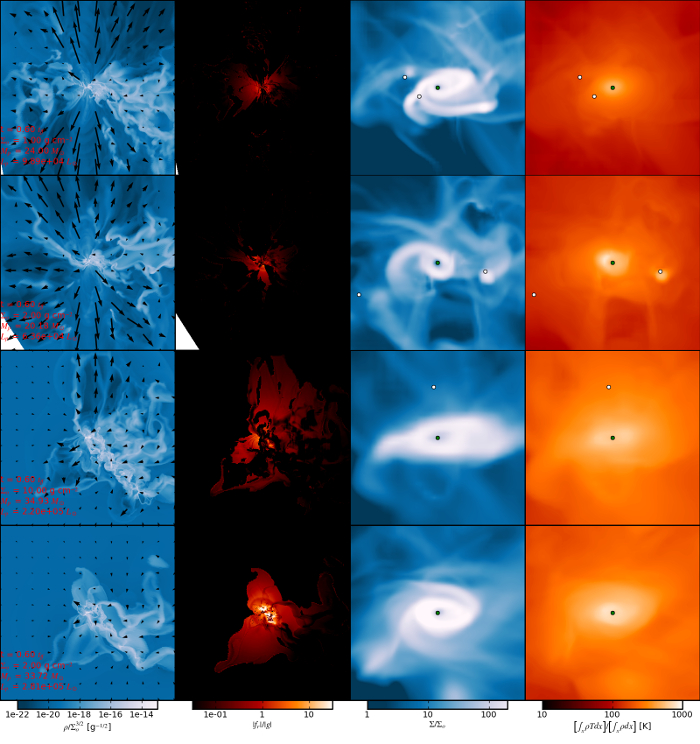
|
EPoS |
|
EPoS Contribution
|
|
The Coupled Effects of Protostellar Outflows and Radiation Feedback on the Formation of Massive Stars
Richard Klein UC Berkeley and Lawrence Livermore National Laboratory, Berkeley, California, USA | |
| High mass stars dominate the energy injection into the interstellar medium and eventually explode as supernovae, producing most of the heavy elements in the universe. Feedback processes from massive stars plays a critical role in their formation, destroys the molecular clouds in which they are born and shape the evolution of galaxies. In this talk I will discuss our recent 3D AMR ORION simulations that are the first to include the coupled feedback effects of protostellar outflows combined with protostellar heating and radiation pressure feedback in a single computation, and their affect on the infalling dusty gas in the surrounding environs of the accreting core envelope. These simulations will address the detailed effects of feedback on massive star formation in a range of star forming environments, from typical galactic star forming conditions to conditions typical of extragalactic super star clusters. In a series of simulations with and without outflow feedback, demonstrating the strong coupling between outflows and radiative feedback on the parent cloud, we show that outflows evacuate polar cavities to reduce optical depth through the ambient core which enhances the radiative flux in the poleward direction up to 15 times larger than in the mid-plane of the surrounding accretion disk. As a result, the radiative heating and outward radiative force exerted on the protostellar disk and infalliing gas in the equatorial direction are greatly diminished. This simultaneously reduces the Eddington radiation pressure barrier to high mass star formation and increases the minimum threshold surface density for radiative heating to suppress fragmentation and allow high mass star formation compared to models that do not include outflows. We show that higher surface density clouds exhibit enhanced radiative feedback, diminished disk fragmentation and result in more massive primary stars with less massive companions, however the effects of protostellar outflow feedback diminish with increased surface density. Conversely, protostellar cores in lower surface density clouds undergo more rapid Kelvin contraction relative to the dynamical time of the cloud, leading to more powerful outflows and more effective mechanical feedback. A key result is that radiation focusing in the direction of the outflow cavities is sufficient to prevent the formation of radiation-driven Rayleigh-Taylor unstable bubbles in contrast to models that neglect protostellar outflow feedback. Finally, I will present our preliminary results on the effects of magnetic fields fully coupled with outflow and radiative feedback using our new MHD development in ORION. The extent to which magnetic fields confine the outflow cavities and can alter the minimum surface density necessary for high mass star formation will be discussed. | |
 | |
| Caption: 3D AMR Simulations with protostellar outflows at t = 0.6 t(free-fall) for the core surface densities of sigma = 1.0gcm^-2, 2.0 gcm^-2, 10.0gcm^-2 and without outflows at sigma = 2.0gcm^-2 from top to bottom rows. First column is scaled column density on a plane oriented so that the outflow launch direction lies in the plane of image (Black arrows indicate velocity field). Second column is the ratio of radiation force to gravitational force. Third column is the column density in a zoomed in plot(0.04 spatial extent of first column) with the outflow direction pointing vertically out of the page and forth column is the mass-weighted radiation temperature. Image show affects of outflow and radiative feedback on high mass star formation in different galactic and extragalactic environments. | |
| Collaborators: A. Cunningham,LLNL,USA M. Krumholz,UCSC,USA C. McKee, UCB A. Myers |
Key publication
|